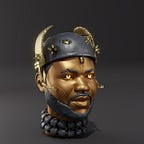How Do You Price Your NFTs?
When it comes to pricing your NFT, you’re your own worst enemy. Because there is no established blueprint or standard for listing a tokenized artwork or any digital asset, you must determine what constitutes “reasonable.”
Balance is key — as not every non-fungible token will sell for thousands or millions of dollars. It’s not easy to list your first piece, and your decision can make or break your chances of selling it. In fact, because the value of your tokenized artwork is so subjective, you might be tempted to sell it for a loss. Unless it’s a super rare asset with high value, you know that pricing your NFT item too high will turn off most buyers.
On the other hand, pricing it too low will make it difficult to increase your stock over time. In this article, we will be discussing how you can price your NFTs and how to spot valuable artworks that you can buy on NFT marketplaces.
Factors To Consider When Pricing Your NFTs
As NFTs become more popular, their sale prices are rising. As a result, NFT creators stand to profit handsomely. Given the fees associated with minting and selling NFTs, not all NFTs will even sell, let alone make their creator any money. You should also budget for the possibility of losing money on your NFT creation due to the costs.
The best way to avoid a loss is to sell an NFT that others will value and set a minimum price that will cover any associated fees. However, in our last article, we discussed how to create your first NFTs for free. Of course, getting involved with any new frontier is a big decision, especially if it costs money right away. So, before putting all your hopes into the business of NFTs, you should consider a few key factors.
As a creator, the NFT marketplace is fun, but it can be cruel when you realize no one wants what you have to offer. Before you devote your time to selling an NFT, you must first understand how the ecosystem works, particularly which saleable and trendy assets. A tokenized item’s value is determined by demand and rarity.
In other words, determining the value of your NFT is dependent on whether or not people are looking for it and whether or not it is rare enough to command a high price once it is released. Ideally, the value of your NFT asset is determined by how much it means to you, not by market demand. Instead of focusing on subjective factors, you should focus on objective ones. You must understand what buyers consider valuable.
Spend some time looking through other artists’ collectibles to see how they’ve priced their works, and then decide if you’re willing to pay those prices. After that, you’ll need to determine your pricing strategy for your NFT.
Strategies to Help You Monetize Your NFTs
The decision on monetizing your NFT is the final step in the NFT minting process. You can do the following, depending on the platform:
- Sell it for a fixed price: Setting a fixed price allows you to sell your NFT to the first person who is willing to pay that price.
- Set up a timed auction: A timed auction will allow those interested in your NFT to submit their final bid within a certain amount of time.
- Start an unlimited auction: There is no time limit on an unlimited auction. Instead, you have complete control over when the auction ends.
You’ll need to figure out the minimum price (if you’re holding an auction), the royalties you’ll need to keep cashing in on your NFT if it resells on the secondary market, and how long you’ll hold the auction (if timed). When determining the minimum price, keep in mind that you may lose money on your NFT sale if you set it too low.
Unfortunately, the costs of minting and selling an NFT can be high and complicated. Depending on the platform and pricing, you may have to pay a listing fee, an NFT minting fee, a commission on the sale, and a transaction fee to transfer money from the buyer’s wallet to yours. Because of the volatility in cryptocurrency prices, fees may also change.
As a result, you should carefully consider the costs of producing and selling your NFT to ensure that they are worthwhile.
Conclusion
The key to a successful NFT investment isn’t just making profitable assets; it’s also knowing how the market works and contributing to its expansion. It doesn’t mean you failed if you only got a small amount on your first try. In fact, many creators were unable to sell on their first try. You just need to concentrate on your concept and brainstorm on the best strategies that will allow you sell off at auction and make profits.
